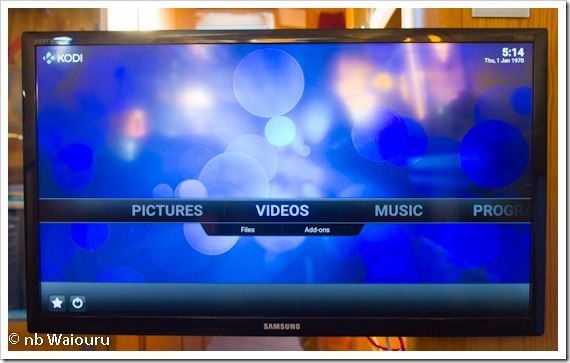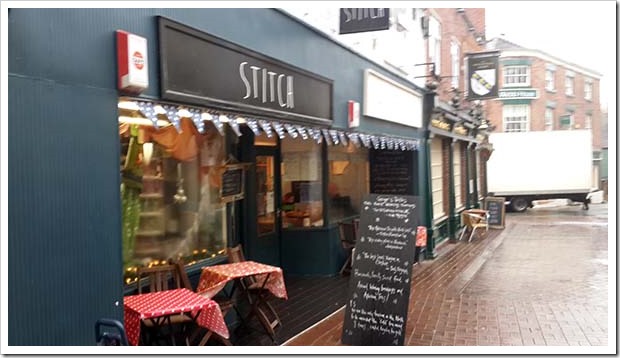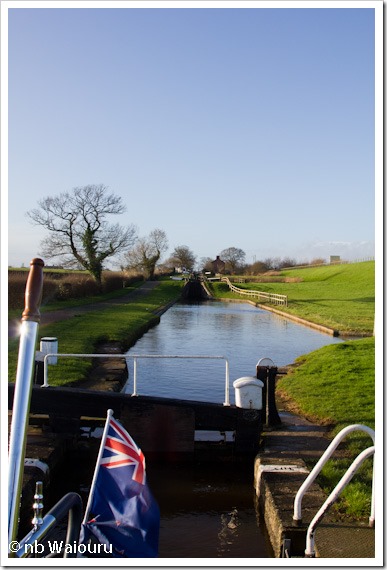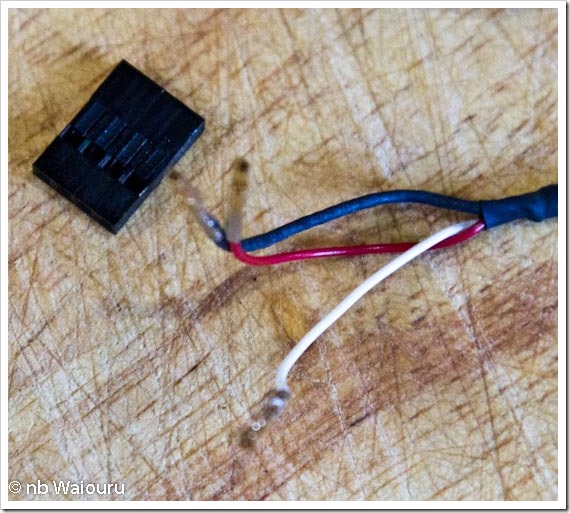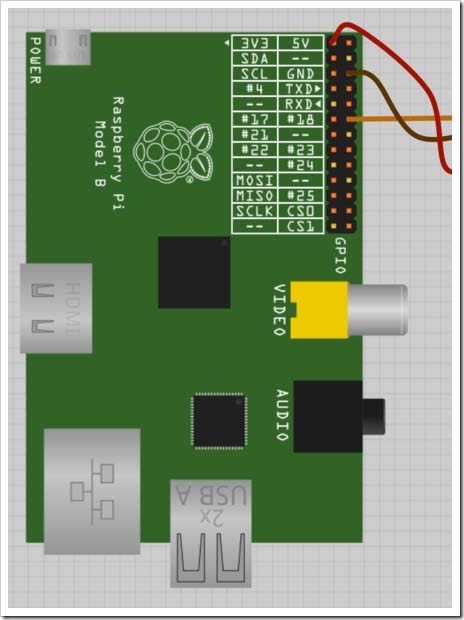An early start today as we wanted to make the most of the predicted fine morning. It was a particularly interesting view out the side hatch whilst waiting for dawn to appear. The big lens on the camera actually captures far more light than the human eye sees so these next two photos don’t really convey how dark it was.

Looking east

Looking west
The first task was to cruise through Nantwich on tick-over to the winding hole on the southern side of the town. No boaters were woken during this movement! 
It was very misty around Marsh Lane Bridge which made visibility difficult. The winding hole is on the other side of the bridge and there seemed to be a boat across the canal. Actually it looked like there might be two boats adrift.
 Eventually we established it was a 70’ boat winding. We’d been beaten to the winding hole by 5 minutes. I loitered under the bridge until the other boat had winded thinking he would then get to the water point before us.
Eventually we established it was a 70’ boat winding. We’d been beaten to the winding hole by 5 minutes. I loitered under the bridge until the other boat had winded thinking he would then get to the water point before us.

However to our surprise he simply returned to his permanent mooring on the embankment. We did wonder why he had bothered to wind so early in the morning.
The water pressure at the CRT services block isn’t very strong and it took almost an hour to fill the top half of the tank.


It was a lovely clear and crisp day by the time the tank had filled. We slowly headed north towards Barbridge Junction intending to make the most of the weather.
When you live in a 6ft diameter steel tube you realise space is a precious commodity. You become very adept at maximizing the space right down to buying square rather than round containers. you also become very tidy. Being a hoarder can create significant issues.
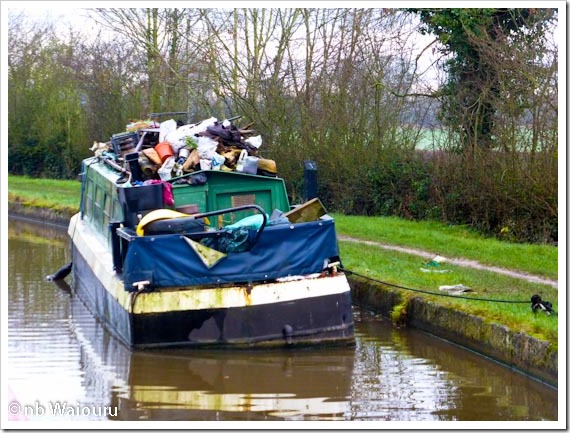
Every window in the boat looked like this.

The plan was to moor outside the Barbridge Inn and enjoy a Sunday roast lunch. Unlike summer, there were no mooring shortages. Actually there was only one other boat. Last time we were here we had the company of Barry & Sandra (nb AreAndAre) along with the wasps in the beer garden. This time we couldn’t get through the door to the pub. It appeared to be closed and the door locked. Jan was about to head back to the boat and make jam sandwiches when I suggested we try the door on the street side. Well both the door and pub were open. Apparently the door from the beer garden is known to jam!
We had one of our best lunches to date. Very tasty (10/10). The beef was cooked to perfection and delicious. Vegetables were also great. It was not the cheapest Sunday roast we have had but the quality was well worth It

I wonder if they are able to maintain the same quality during the busy summer season.
Later in the afternoon we had unexpected, but most welcome visitors. We last saw Skippy and Tam at Aldermaston.

Tam & Skippy on a partially fitted out Waiouru in Sep 2012
They are now living afloat in this part of the country and since our first meeting have been joined by a much smaller third member of their crew family.
It was very good of them to travel out of their way and meet us again.
![]()



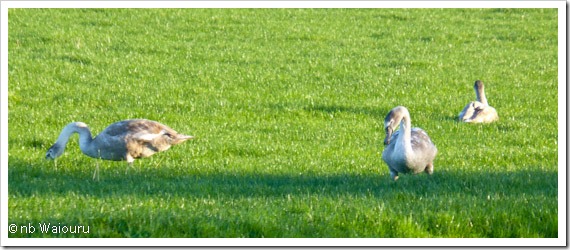




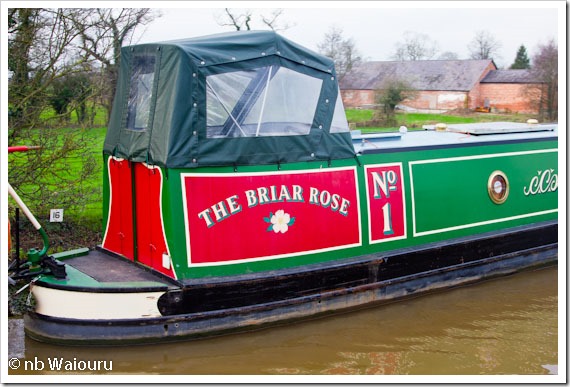


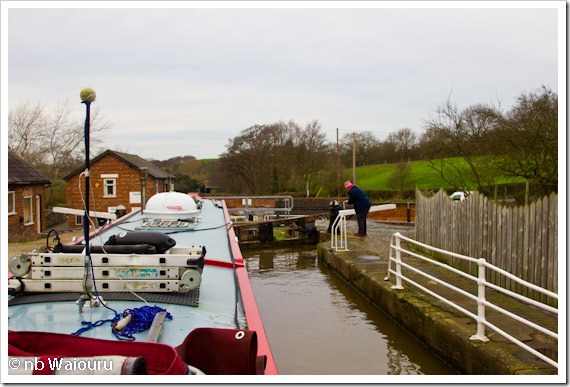

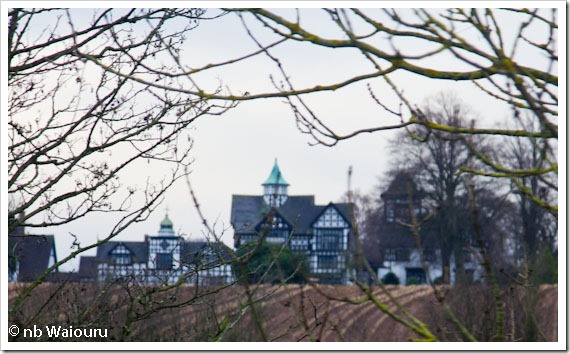

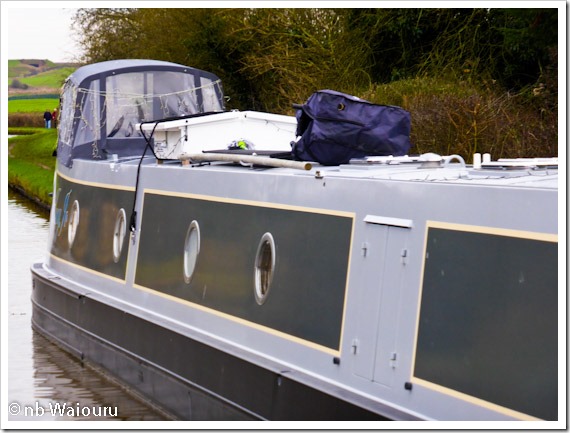











 It
It




